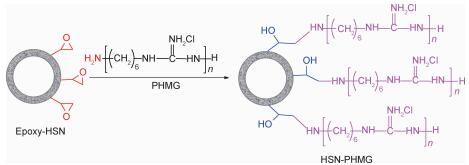 PDF(2971 KB)
PDF(2971 KB)


聚六亚甲基胍盐酸盐功能化中空纳米二氧化硅制备新型抗菌剂的研究
张孜文, 张康民, 杨建军, 吴庆云, 吴明元, 张建安, 刘久逸
材料工程 ›› 2020, Vol. 48 ›› Issue (3) : 40-46.
 PDF(2971 KB)
PDF(2971 KB)
 PDF(2971 KB)
PDF(2971 KB)
聚六亚甲基胍盐酸盐功能化中空纳米二氧化硅制备新型抗菌剂的研究
 ({{custom_author.role_cn}}), {{javascript:window.custom_author_cn_index++;}}
({{custom_author.role_cn}}), {{javascript:window.custom_author_cn_index++;}}Novel antibacterial agent prepared by poly (hexamethylene guanidine hydrochloride) functionalized hollow nano-silica
 ({{custom_author.role_en}}), {{javascript:window.custom_author_en_index++;}}
({{custom_author.role_en}}), {{javascript:window.custom_author_en_index++;}}
| {{custom_ref.label}} |
{{custom_citation.content}}
{{custom_citation.annotation}}
|
/
| 〈 |
|
〉 |